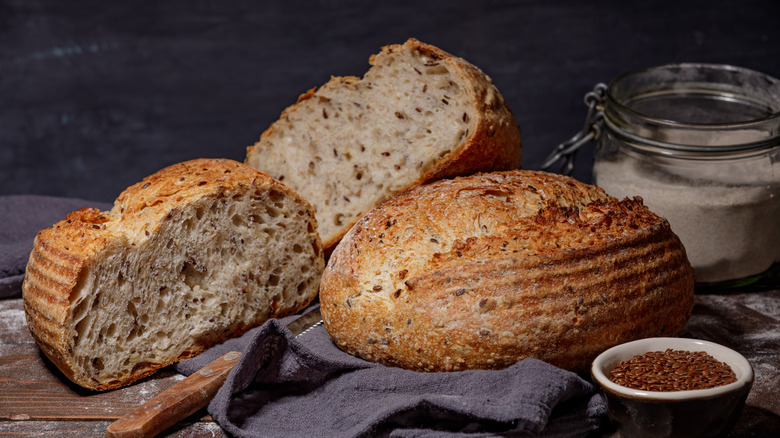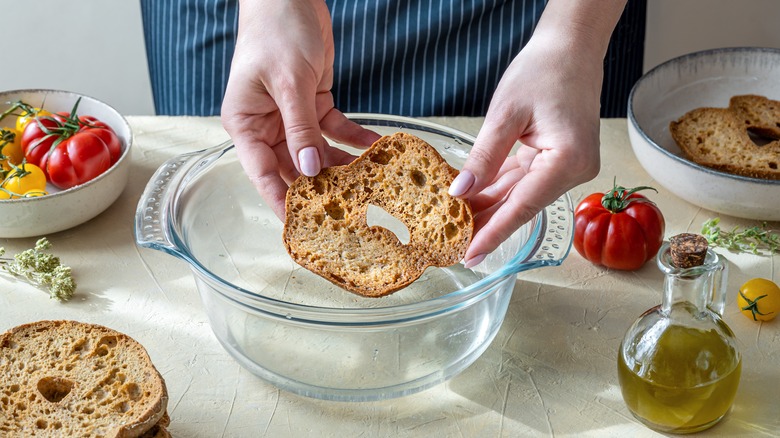Give Oven-Baked Bread A Crispy Crust With A Simple Water Hack
If you happened to pick up bread baking in the last few years, rest assured that you're not the only one to be obsessed with sourdough. However, one of the major differences between bread baked at home and bread bought at your local artisanal bakery is that your homemade loaves tend to have a chewier crust compared to the bakery's likelier crispy crust. The trick to fix this is simple: water.
When preheating the oven for the bread, place a cast iron skillet or baking pan at the bottom of the oven. Then, right after loading the formed dough into the oven for baking, pour about 1½ cups of boiling water into the pre-heated skillet and quickly shut the oven door. Remember to wear sturdy oven gloves to avoid steam burns!
The hot water will steam up the oven, aiding in specific processes including browning the crusts of the baking loaves. The trick now is to avoid too much steam, as the excess moisture will contribute to an unpleasantly chewy crust; so make sure to remove the pan of water after about 15 minutes.
Crisp, steam, and oven spring
It seems almost counterintuitive — how does adding water and steam make bread crispier? This is due to the starch gel that forms when the surface of the dough absorbs moisture, which then dries as it bakes. This happens at temperatures around 180 degrees Fahrenheit, and the continuous absorption and consequent cooking produce a blistery, crackly crust.
However, there is a limit. Too much steam will prevent those precious crunchy blisters from forming, so a little experimenting with the amount of steam used is necessary to find the perfect amount for your oven and your loaves.
Other than crispiness, steam also aids in a process called "oven spring" that's explained by Busby's Bakery as the moment when the yeast in the loaf is forced to "produce carbon dioxide at a much faster rate" due to the high heat of the oven. In layman's terms, oven spring is the initial moment of baking when the dough balloons in size. Steam helps slow down the effect of heat on the outside of the loaf, which delays the setting of the crust. This more flexible crust then allows for the expansion of the interior of the loaf, resulting in a more airy crumb.
Water helps leftover bread as well
Water can also help revive stale bread, returning fluffiness to the crumb. Since the scientific reason that bread goes stale is because water has evaporated out of it, the simple solution is to return water to it. Once the oven has preheated to a temperature of around 350 degrees Fahrenheit, briefly pass the stale bread under running water or quickly dip it in a bowl of water. Wrap the bread in aluminum foil and heat it in the oven until the bread has sufficiently softened. If you want to restore a bit of crunch to the crust, unwrap the foil and continue heating the bread up for several minutes more, just like you would when toasting bread.
To return to baking bread from scratch, there are many other bread-baking hacks to produce a bakery-worthy loaf apart from adding steam. Consider switching from measuring cups to weighing scales for more precision when measuring different flours and other ingredients, and master the poke test to check if your dough has been properly proofed. Few kitchen projects are as finicky yet as rewarding as baking bread, which is no wonder that bread is the stuff of life.


